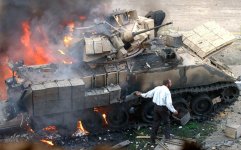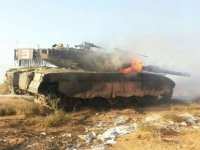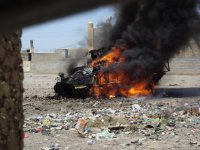daftandbarmy
Army.ca Dinosaur
- Reaction score
- 32,220
- Points
- 1,160
Colin P said:problem is that any system will eventually be defeated, heavy armour still buys you a lot and for take out a major urban area, you need all the help you can get https://www.youtube.com/watch?v=xLCVi6PVNdY
And that means artillery. Lots and lots of artillery.
If there's one thing the decades long focus on the 'Current Operating Environment' has done to limit our effectiveness during a major conflict, it's probably the lack of effort on building and maintain overpowering indirect fire support.... from artillery.






